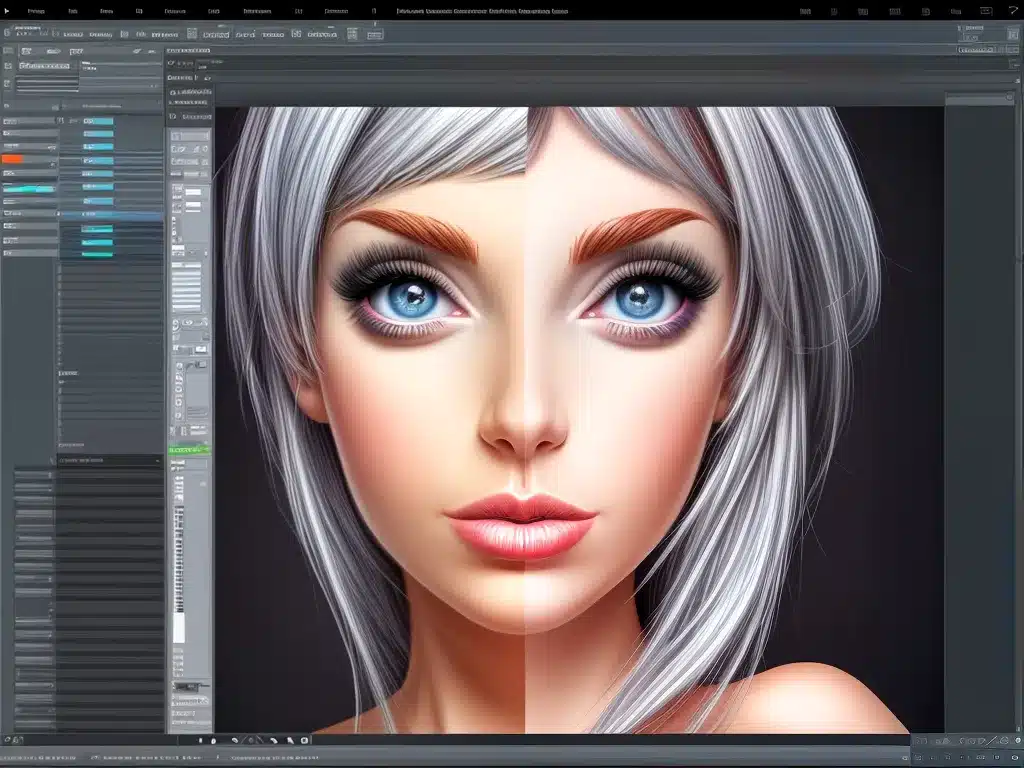
Introduction
Clip Studio Paint has emerged in recent years as a powerful alternative to Adobe Photoshop for digital artists. With its robust tools for illustration, manga/comics creation, and animation, along with its affordable price point, Clip Studio Paint poses serious competition to the Photoshop heavyweight. In this article, I will explore the key features of Clip Studio Paint and how it stacks up against Photoshop.
Key Features of Clip Studio Paint
Illustration Tools
Clip Studio Paint shines when it comes to illustration. It offers an immense variety of customizable brushes, including pens, pencils, airbrushes, and more. These brushes simulate real-world media with advanced settings like brush tip shape, texture, scattering, and dual brushes. For example, I can create natural, textured strokes like charcoal or ink bleeds.
The software also provides tools like rulers, speedlines, screentones, and 3D drawing figures to enhance illustrations. Overall, Clip Studio delivers a more tailored experience for drawing and painting than Photoshop.
Comics Creation
Clip Studio includes specialized features for comic and manga creation, such as panel tools, speech bubbles, and effect lines. I can layout multi-page comic spreads, use perspective guides, and easily import 3D models as drawing references. These capabilities make Clip Studio the premier choice for crafting comics digitally.
Animation
With its animation timeline and onion skinning, I can create simple animations frame-by-frame in Clip Studio. The ability to preview animations in real-time helps streamline the process. While not as advanced as dedicated animation software, these tools provide a great starting point for aspiring animators.
Asset Management
Clip Studio offers robust asset management through its Materials collection. I can easily access my full collection of brushes, colors, 3D models, and more from any document. Extensive customization options help organize materials to optimize workflow efficiency. Photoshop’s asset management pales in comparison.
Price
Here’s where Clip Studio Paint delivers a knockout blow – it’s available as a one-time purchase for $50-230, compared to Photoshop’s $120-600 annual subscription. For amateur and hobbyist artists, Clip Studio provides tremendous value. Its pricing makes it very accessible.
How Clip Studio Compares to Photoshop
Image Editing
Photoshop remains the industry standard for image editing and retouching. Its selection, masking, and layer tools are more advanced and accurate than Clip Studio’s. Tasks like meticulous photo manipulation and compositing are better achieved in Photoshop.
Drawing/Painting
Clip Studio surpasses Photoshop for drawing and painting, with its natural brushes, comics creation tools, and animation capabilities. Photoshop’s brush engine and tutorials focus more on photo manipulation rather than pure illustration.
Learning Curve
Clip Studio Paint has a gentler learning curve thanks to its streamlined interface and built-in tutorials. Photoshop’s staggering array of tools can overwhelm beginners. But Photoshop offers more control for experts.
System Requirements
Clip Studio Paint runs well on lower-spec computers, while Photoshop requires a more powerful device. Photoshop also demands more storage space and RAM.
Which One is Right for You?
For drawing, illustration, manga, and comics, Clip Studio Paint is the optimal choice. Its focused features for these mediums, natural brushes, and affordable pricing make Clip Studio the winner for artists focused on these areas.
For photography, intricate image manipulation, and compositing, Photoshop remains the top choice. Its sophisticated toolset for tasks like selections, transformations, and masks is unmatched. But its subscription model is a barrier for hobbyists.
For a balanced option, using both can be advantageous. Clip Studio could be the daily driver for drawing and rough compositions. Photoshop steps in later for refined photo edits and compositing. This combo takes advantage of both programs’ strengths.
The best software depends on individual needs. Clip Studio Paint provides serious competition to Photoshop in key artistic areas. For drawing and painting, it may even surpass Photoshop for many users. But Adobe still retains superiority in other realms like photo manipulation. Understanding their respective strengths helps artists choose the right tool.
Summary
- Clip Studio Paint excels in illustration, comics/manga creation, and animation with its natural brushes and specialized tools.
- It offers excellent asset management and a one-time purchase pricing model.
- Photoshop has better selections, transformations, and compositing for intricate image manipulation.
- For drawing/painting, Clip Studio is preferred. For photography, Photoshop is favored.
- Using both can take advantage of their respective strengths. Select software based on artistic needs.












